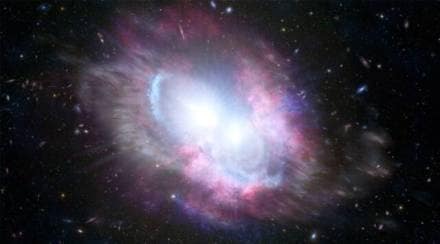Two supermassive black holes have been distinguished as two galaxies have merged, emitting a lot of light. This cosmic event actually happened around three billion years ago.
When two or more galaxies merge, they produce a huge amount of stars. This process ignites the formation of new stars in relatively short bursts. The merging galaxies also generate supermassive black holes in their centers, which turn them into stellar quasars, outshine the rest of the galaxy.
The discovery of these black holes is regarded as the first confirmation of a pair of supermassive black holes in the cosmic noon period, which occurred during the early history of the universe.
Eventually, the merging galaxies will turn into elliptical structures that are filled with black holes that are several billion times bigger than our Sun.
Several galaxies have been merging with one or more quasars, but this particular instance is exceptional due to how rare it is. It’s difficult to find such events when the universe is only a quarter of its age.
The search for these black holes, which are so close that they can’t be distinguished individually, is like looking for polar bears in a snowstorm.
To be able to confirm the existence of two supermassive black holes, astronomers need to see them both shine as quasars at the same time.
According to the NSF, there is only about one active supermassive black hole that’s accreting at a rate of one every 100 million times. Even fewer quasars are black holes. Two black holes that are both extremely close to one another and are also quasars should be considered rare.
Astronomers will be able to gain a deeper understanding of the universe by studying the early universe when these supermassive black holes are still forming. Through this knowledge, they can also learn more about the frequent merging of galaxies.
